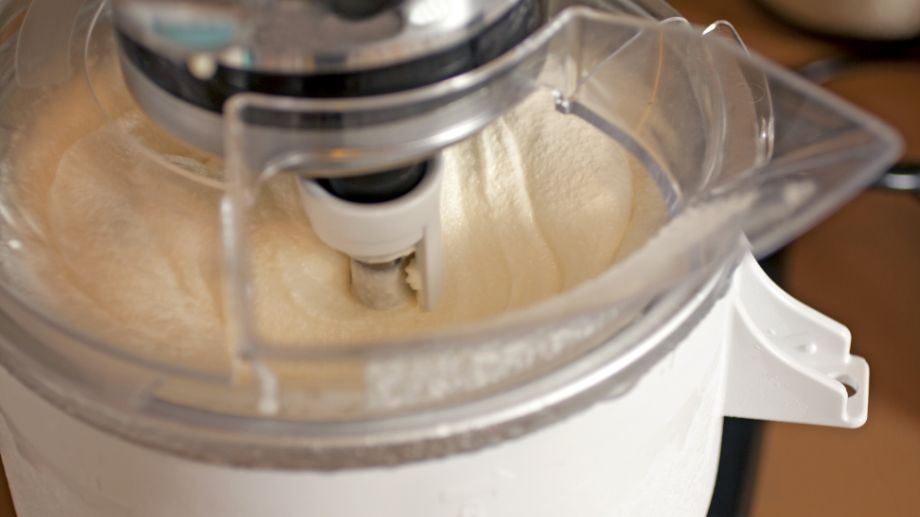Are you making homemade ice cream for the first time? It can be tricky to figure out whether your batch is churned properly.
Churning is a very important part of the process, so you need to get it right. Getting it wrong by over-churning or under-churning can mean ice cream that is too icy, bitter or watery. But how do you know exactly how long to churn ice cream for?
Most churners take approximately 20 minutes to create creamy and delicious ice cream but it's best to go on sight and sound which are much more reliable indicators. Look for a consistency like soft-serve ice cream and listen for a change in the sound of your machine (it will sound labored). If your ice cream looks like store bought ice cream you have over-churned the batch.
So what does perfectly churned ice cream look like?
Keep reading to discover how to create a successful soft scoop! Including our number one tip for a truly delicious mixture.
What Exactly Does Churning Do To Make Ice Cream?
Churning is an interesting part of the ice cream making process and it's normal to wonder what exactly churning does and whether or not it's needed.
If you want light fluffy ice cream then churning is required. Without churning your ice cream will turn into a very hard ice brick slab and won't have the taste and texture you expect from ice cream. It'll be more like an ice block.
Churning (by hand or in a machine) prevents large ice crystals from forming in the ice cream and will also aerate the ice cream (add air into it) giving it that fluffy texture.
Ice cream mixture churned in a machine will have more air whipped in than hand-churned ice cream. If you want to create a smooth texture that feels rich and luxurious then you need to learn to churn.
How Do I Know When Ice Cream Is Done Churning?
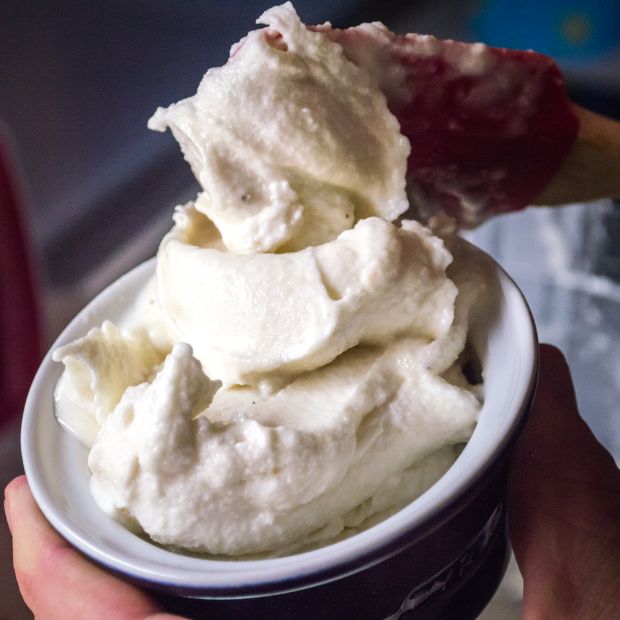
We recommend that you set a timer for approximately 20 minutes as this is the average time it takes to churn ice cream.
Be sure to listen for a change in the sound of your machine and look for a consistency like soft-serve ice cream.
If you wait until it looks like “normal” ice cream, you’ll be over-churning the batch.
The part on your machine that spins (‘the dasher’) will make a high-pitched sound. As the ice cream thickens the sound will deepen and the dasher will appear more labored.
Checking your mixture periodically will yield the best result.
When you are happy with the consistency you can check it by using the bottom of a spoon to press into the mixture. If it leaves an indent, your ice cream should be ready to put into the freezer to chill.
If the spoon doesn’t make an indent, the mixture is still too thin and should continue churning.
Things That Affect Churning Time For Ice Cream
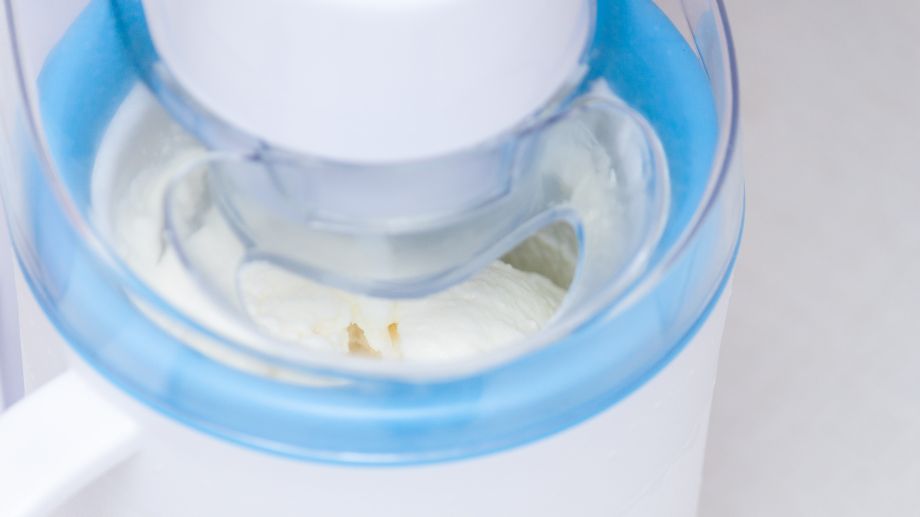
1. Different ice cream machines will vary in strength and speed. A more expensive, higher-powered maker will churn far more quickly than an older version.
2. The outside temperature can affect the amount of time it takes for your ice cream to churn. If you live somewhere warm or your kitchen is hot, it can take far longer than average.
3. Ingredients matter! While you can make ice cream out of skimmed or semi-skimmed milk, it won’t come out as creamy as it should. We recommend full cream or full-fat milk. Substitutions are discouraged as they affect the ability of the ice cream to churn well and freeze. Do you want to know what salt does to your ice cream?
4. An overfilled ice cream bowl will take longer to churn. Definitely don't pack your machine more than two-thirds full.
5. Avoid using warm equipment and mixture. You will want to stick your ice cream bowl in the freezer overnight or for a good 24 hours at least. Don't forget to chill the ice cream base in the fridge for at least 12 hours before churning too. This ensures that the base is as cold as possible before you pour it into the machine.
If you forget this step it can seriously impact the quality of your ice cream and result in a super slow process. The ice cream may be too watery or could potentially not freeze at all.
Can You Over Churn Ice Cream?
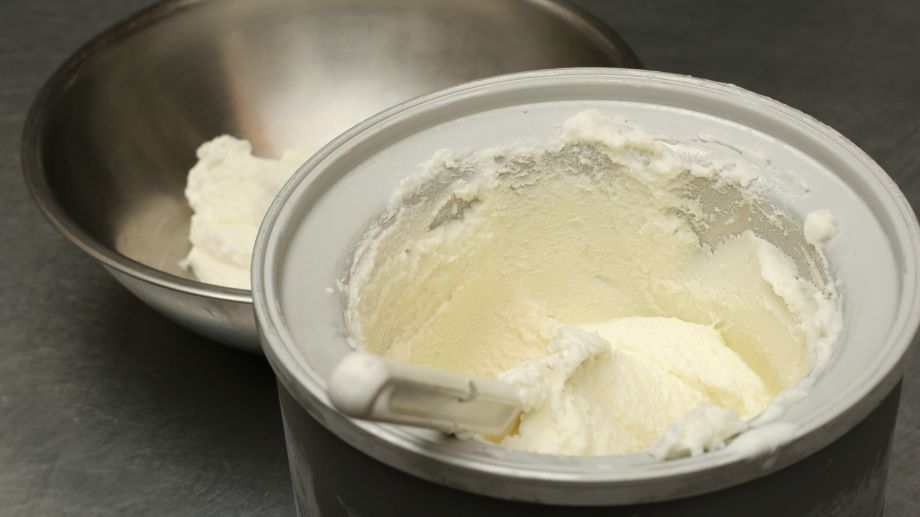
Yes, you can!
If the ice cream churns for too long, it will leave you with a waxy or buttery aftertaste.
Although this may be disappointing, it can also be a great lesson. Take note of the time you spent churning and then decrease it with your next mixture.
Icy texture can also be due to over-churning.
Ice crystals begin to form during the churning process. This is what gives ice cream its texture. However, if you churn for too long, the crystals continue to get bigger and can give your ice cream TOO much ice!
What Happens If You Under Churn Ice Cream?
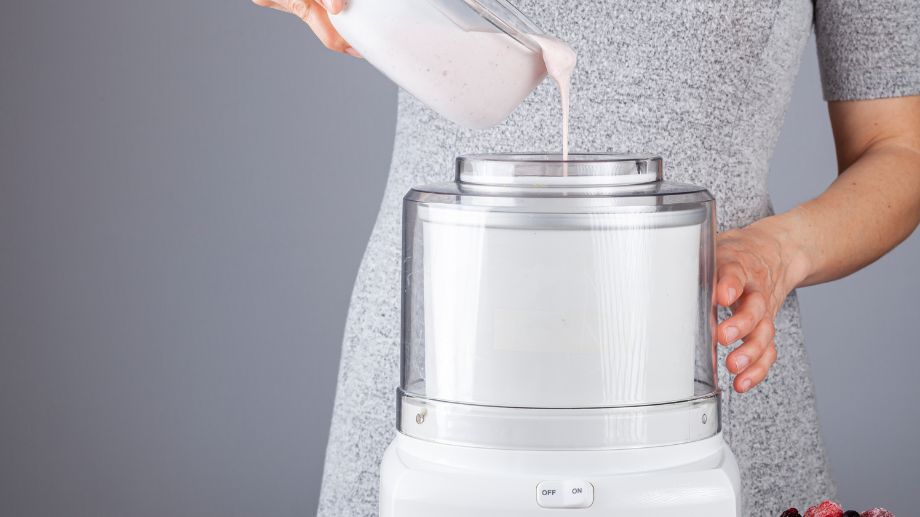
Under churned ice cream will not thicken or freeze properly.
Carry on churning until you have a soft scoop consistency!
Here are some potential problems with your batch…
- Is it too sweet? Sugar doesn't freeze so a super sweet mix is going to be softer. Try decreasing sugar content slightly (not too much or you will end up with an icier result)
- You used substitutes. Decreasing the fat in your ice cream will affect the texture and ability to churn.
- You have added too much alcohol to your ice cream. This will prevent it from thickening and freezing.
Be careful when making substitutions or adding things to your ice cream base.
How Cold Should Your Ice Cream Base Be Before Churning?
OUR TOP TIP:
Freezing your ice cream base overnight ensures the base is extremely cold. We highly recommend freezing your base for at least 24 hours – deep-chilled ice cream bases churn better than warmer ones.
If you want to churn a base the same day you make it, you'll need to set up an ice bath to cool down your hot custard.
This can be very difficult but not impossible.
We also recommend freezing your mixing bowl too. Having cold equipment will speed up the churning process and ensure the best results.
Summary
Churning is an important part of the ice cream-making process, it prevents ice crystals from forming in the mixture.
Churning will give your homemade ice cream that smooth luxurious texture found in store-bought ice creams.
Expect it to take approximately 20 minutes to churn you ice cream.
Remember it is more important to look for the ‘soft scoop’ consistency.
Another reliable indicator is to listen for the sound of your machine to change.
There are several factors which can influence the time it takes to churn your ice cream. The temperature of your kitchen and tools.
The quality of your tools and ingredients and how full the ice cream machine is will also impact churn time.
A waxy or buttery aftertaste or icy texture are signs of over churning. Ice cream that will not thicken or freeze requires a longer churn time.
Our experts top tip is to ensure that you freeze your ice cream custard base overnight and the ice cream bowl too for best results.

